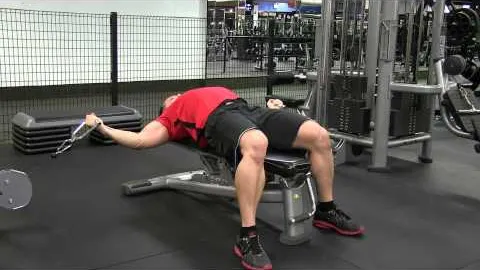
In the realm of strength training and bodybuilding, one exercise that often stands out is the Cable Crossover Flat Bench Fly. This compound exercise targets the chest muscles, specifically the pectoralis major and minor. It is known for its effectiveness in building strength and size in the chest, making it a staple in many workout routines. In this guide, we'll cover everything you need to know about performing the Cable Crossover Flat Bench Fly exercise, including its benefits, proper form, variations, and safety precautions.
The Cable Crossover Flat Bench Fly exercise is a variation of the traditional flat bench fly, with the added resistance provided by cable machines. This exercise involves standing between two cable machines with both cables set to a mid-height position. By gripping the handles, you can perform a fly motion with your arms extended, engaging the chest muscles.
To perform the Cable Crossover Flat Bench Fly exercise with proper form, follow these steps:
To ensure a safe and effective Cable Crossover Flat Bench Fly exercise, keep the following precautions in mind:
The Cable Crossover Flat Bench Fly exercise offers a range of benefits, making it an excellent addition to any chest-focused workout routine. By following the proper form, exploring variations, and practicing safety precautions, you can effectively target and develop your chest muscles. Incorporate this exercise into your strength training program, and you'll be well on your way to achieving a stronger and more defined chest.
If you're looking for a gym, fitness club or yoga studio, you've come to the right place.
You can find information about gyms in your area. Browse catalog of gyms and find gyms with classes which are you looking for.
On gym page you can find simple information like address, phone or website. You can find list of available classes. You can check availability of personal training or small group classes. On place page you can also see information about open hours.
You can find gyms near you with amenities, courts, studios and equipments.
Use our map to find gym at your city or district.
In Gym Navigator you can find list of exercises with movies for many body parts.
You can browse exercises catalog and find exercises the best of you.
You can also find exercises grouped into workout plans, which you can use to improve you body. Each routine show you exercises one by one and give you possibility to count you progress and count down rest time.